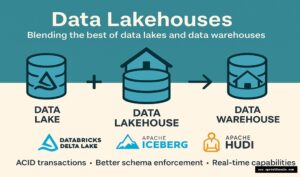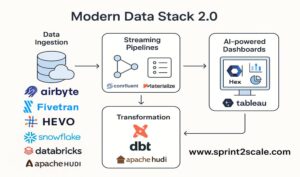Introduction
In the ever-evolving landscape of business, companies are constantly seeking ways to enhance their adaptability, responsiveness, and overall efficiency. Agile methodology has emerged as a transformative force, enabling organizations to thrive in dynamic markets. In this blog, we delve into real-world examples of Agile Transformation Success Stories. Through these stories, we aim to shed light on the key strategies, challenges faced, and lessons learned, offering valuable insights for those considering or currently undergoing an Agile transformations including deploying it as Agile in Remote Work Environments.
I. Understanding Agile Transformation
Before delving into the success stories, it’s crucial to understand what Agile transformation entails. Agile is not just a set of practices; it’s a mindset that promotes collaboration, adaptability, and customer-centricity. Agile transformations involve a fundamental shift in organizational culture, processes, and mindset to foster agility. The goal is to deliver value faster, respond to change swiftly, and continuously improve.
II. Agile Transformation Success Story at Spotify: Harmonizing Agile at Scale
Spotify, the popular music streaming service, embarked on an Agile transformation journey to better align its development teams with its business goals. The company moved away from the traditional hierarchical structure to a model known as “tribes,” “squads,” and “guilds.” Each squad operates as a cross-functional, autonomous unit focused on specific business objectives.
Key Strategies:
- Squads and Tribes Structure: Spotify’s Agile transformation involved breaking down its workforce into small, cross-functional teams (squads) that belong to larger units called tribes. This structure encourages collaboration and quick decision-making.
- Autonomy and Accountability: Squads at Spotify have a high degree of autonomy, enabling them to make decisions independently. This autonomy is coupled with a strong sense of accountability, fostering a culture of ownership and responsibility.
Challenges Faced:
- Communication Across Tribes: Coordinating efforts and maintaining communication across numerous squads and tribes posed a challenge. To address this, Spotify implemented regular cross-tribe events and rituals to facilitate information sharing.
- Balancing Autonomy and Alignment: Striking the right balance between autonomy at the squad level and alignment with overall organizational objectives required continuous refinement. Spotify learned that too much autonomy without alignment could lead to divergence from company goals.
Lessons Learned:
- Evolutionary Approach: Agile transformations are not one-size-fits-all. Spotify embraced an evolutionary approach, continually adapting its Agile practices based on ongoing feedback and lessons learned.
- Cultural Shift: Transforming into an Agile organization necessitates a cultural shift. Spotify recognized the importance of fostering a culture that values collaboration, experimentation, and learning from failure.
III. Agile Transformation Success Story at Salesforce: Trailblazing Agile Transformation in CRM
Salesforce, a global leader in customer relationship management (CRM), underwent a comprehensive Agile transformation to enhance its product development and delivery capabilities. The company aimed to increase speed to market, improve collaboration, and ensure customer satisfaction through iterative development.
Key Strategies:
- Agile Framework Adoption: Salesforce adopted the Scrum framework as the foundation for its Agile transformation. This involved breaking down work into time-boxed iterations (sprints) and establishing cross-functional teams to deliver incremental value.
- Customer-Centric Approach: Salesforce prioritized customer feedback and needs throughout the Agile transformation. This customer-centric approach guided development priorities and ensured that the delivered features aligned with market demands.
Challenges Faced:
- Cultural Resistance: Shifting from a traditional waterfall approach to Agile faced resistance from some teams accustomed to established processes. Salesforce invested in comprehensive training programs and change management strategies to address this resistance.
- Balancing Speed and Quality: The need for speed in Agile development sometimes raised concerns about compromising product quality. Salesforce addressed this challenge by emphasizing the importance of maintaining a balance between speed and quality through continuous testing and collaboration.
Lessons Learned:
- Investment in Training: Salesforce recognized the importance of equipping teams with the necessary skills and knowledge to embrace Agile practices. Training and mentorship programs played a crucial role in overcoming initial resistance and accelerating the transformation.
- Iterative Improvement: Agile transformation is an ongoing journey of continuous improvement. Salesforce adopted an iterative approach, regularly inspecting and adapting its Agile practices based on feedback and outcomes.
IV. Agile Transformation Success Story at ING: Banking on Agile for Innovation
ING, a leading global bank, underwent a strategic Agile transformation to enhance its ability to innovate, respond rapidly to market changes, and deliver customer-centric solutions. The transformation aimed to break down silos, increase collaboration, and foster a culture of experimentation.
Key Strategies:
- Scaled Agile Framework (SAFe): ING adopted the Scaled Agile Framework (SAFe) to facilitate Agile at scale. SAFe provided a structured framework for coordinating multiple Agile teams, ensuring alignment with organizational goals. Scaling Transformations have it own set of pitfalls and SAFe is no such exception. SAFe transformations has its own set of problem snd solutions which are covered in detail in the article titled –Scaled-agile-framework-problems-solutions.
- Cross-Functional Teams: ING embraced the concept of cross-functional teams, bringing together individuals with diverse skills to work collaboratively on delivering value. This approach aimed to eliminate silos and enhance end-to-end ownership of product development.
Challenges Faced:
- Organizational Resistance: Agile transformation often faces resistance from existing organizational structures and processes. ING addressed this challenge through transparent communication, highlighting the benefits of Agile practices in driving innovation and competitiveness.
- Balancing Stability and Innovation: As a financial institution, ING needed to strike a balance between maintaining stability and fostering innovation. The Agile transformation focused on creating a dual operating model that allowed for both stability in core banking operations and flexibility in innovation initiatives.
Lessons Learned:
- Leadership Support and Alignment: Successful Agile transformation requires strong leadership support and alignment with organizational goals. ING leaders actively championed the Agile mindset and practices, setting the tone for the entire organization.
- Empowering Teams: ING recognized the importance of empowering Agile teams to make decisions and take ownership of their work. This empowerment contributed to increased motivation, innovation, and a sense of accountability among team members.
V. Lessons for Future Agile Transformers
As we explore these Agile transformation success stories, several common themes emerge, offering valuable lessons for organizations considering or currently undergoing Agile transformations:
- Cultural Shift is Paramount: Agile transformations require a fundamental shift in organizational culture. Embracing an Agile mindset, valuing collaboration, and fostering a culture of continuous improvement are foundational elements.
- Leadership Support is Non-Negotiable: Successful Agile transformations are often driven by strong leadership support. Leaders must champion the Agile mindset, actively participate in the transformation, and align organizational goals with Agile principles.
- Customization is Key: There is no one-size-fits-all approach to Agile transformation. Each organization is unique, and customization based on context, size, and industry is crucial. An evolutionary approach that allows for continuous learning and adaptation is essential.
- Invest in Training and Development: Equipping teams with the necessary skills and knowledge through comprehensive training programs is vital. This investment accelerates the adoption of Agile practices and mitigates resistance.
- Balance Autonomy and Alignment: Striking the right balance between team autonomy and alignment with organizational goals is critical. Too much autonomy without alignment can lead to divergence from the overall strategic objectives.
- Customer-Centricity Drives Success: Prioritizing customer needs and feedback throughout the Agile transformation ensures that the delivered solutions align with market demands, driving customer satisfaction and business success.
- Continuous Improvement is a Mindset: Agile transformation is not a one-time project but a continuous journey of improvement. Regularly inspecting and adapting Agile practices based on feedback and outcomes is key to sustained success.
Conclusion
Agile transformation is a powerful strategy for organizations aiming to thrive in today’s fast-paced and unpredictable business environment. The success stories of Spotify, Salesforce, and ING provide valuable insights into the key strategies, challenges faced, and lessons learned during their Agile journeys. By embracing a cultural shift, gaining leadership support, customizing approaches, investing in training, balancing autonomy, prioritizing customers, and fostering a mindset of continuous improvement, organizations can unlock their full potential and achieve lasting success through Agile transformation.







No Comment! Be the first one.